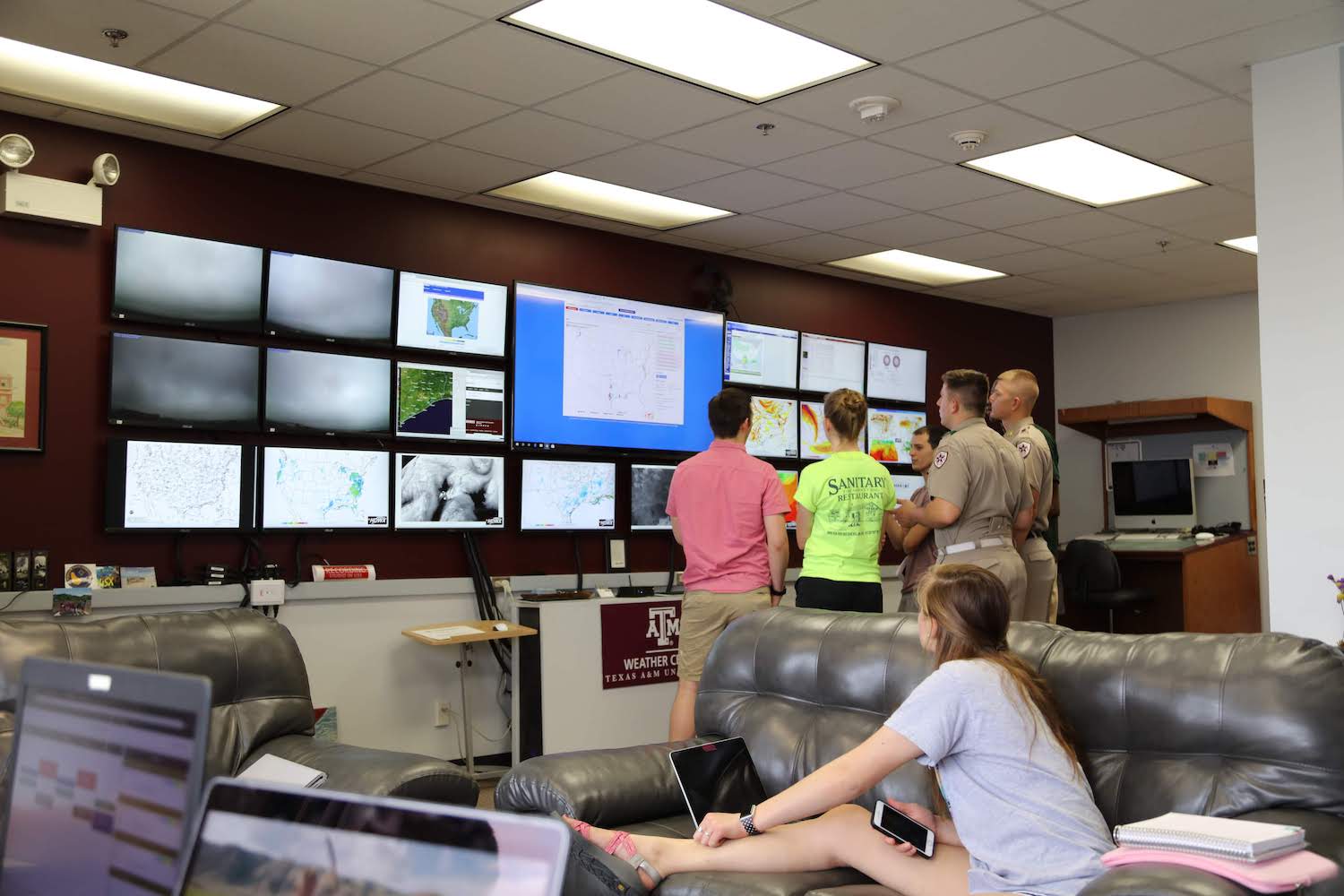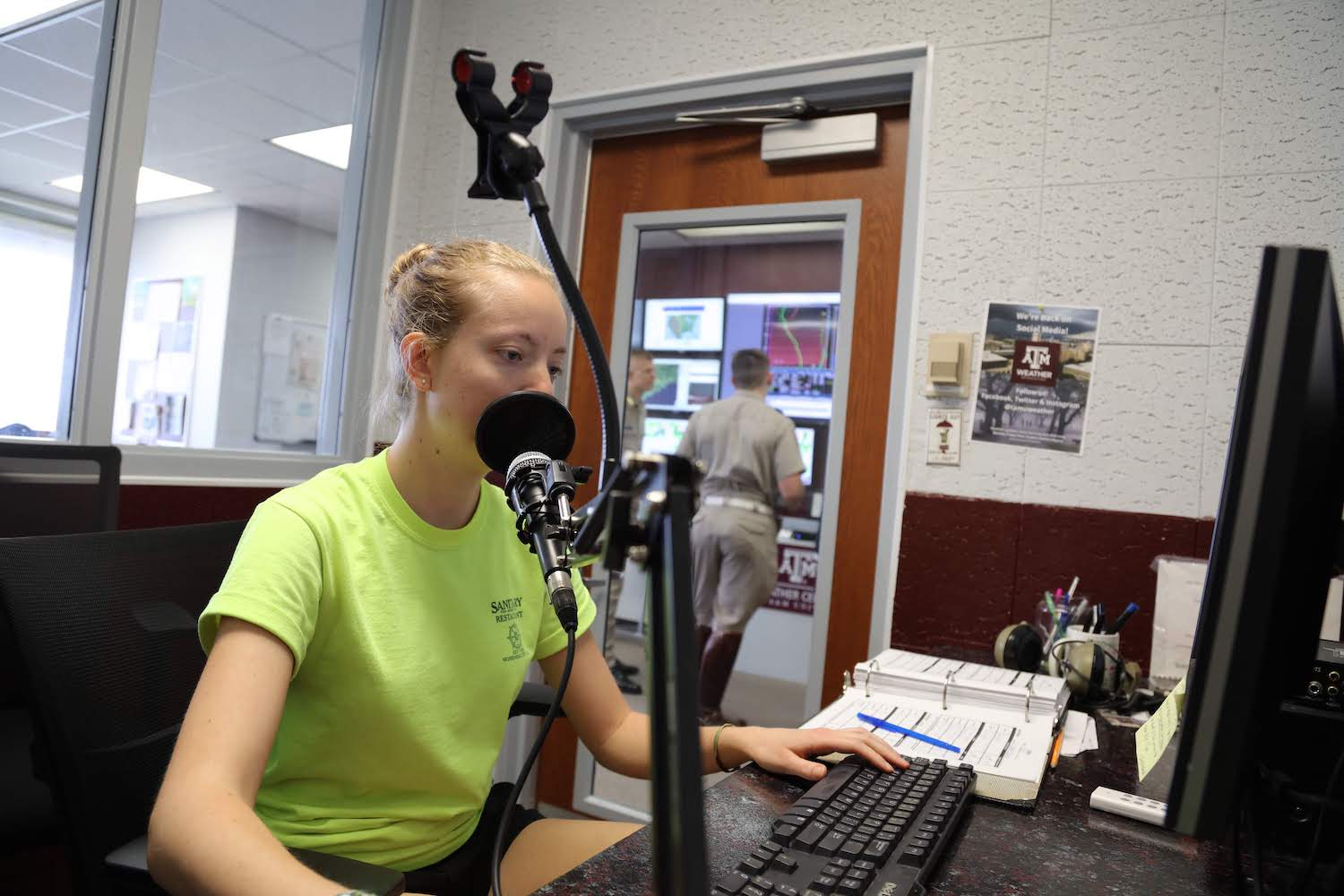
The Texas A&M Weather Center is a 12th floor facility dedicated to providing access to weather information in manner reminiscent of the paper chart walls of the past, but utilizing current technology. The electronic chart wall is the focus of the facility, providing information on 22 high resolution displays. What distinguishes this facility is the ability of any user to reconfigure the entire display array to highlight different weather situations and models using a touchscreen control; tropical weather, severe weather, or precipitation weather are examples of display configurations. Four of the screens are generally dedicated to the cloudcams located on the roof of Eller O&M Building, providing loops of cloud conditions mimicking the views from the 15th floor Observatory. Inside the center is an audio recording studio to support our student-led Aggie Weather Broadcasting activity serving two public radio stations with observations and forecasts. Computers configured like our large laboratory classrooms enable students to continue assignment work, and a casual seating area offers a relaxing place to study or take in the tremendous view of much of Aggieland as well as approaching weather from the northwest ...


HISTORY OF THE WEATHER CENTER
The project was initially the idea of Dr. Don Conlee, who teaches many of the traditional synoptic meteorology courses at A&M. He wanted to reinvigorate both a weather culture and ensure that the benefits of the old traditional paper chart walls were re-created. Chris Mouchyn designed and coded a web-based interactive system which allows instant reconfiguration of the entire display. Dr. Conlee and then faculty Dr. Russ Schumacher designed a set of GEMPAK products that would take advantage of the kind of resolution now commonly available in even inexpensive monitors, the high-definition (HD) resolution of 1920x1080 pixels. This was the genesis of the name of the product website underlying the electronic chart wall, HDWX. The initial version of the weather center was opened in the Fall of 2009. Not long after, Dr. Richard Orville spearheaded the effort to add a real time lightning detection network display to the wall.
A major renovation of the Weather Center occurred during the Summer of 2017, which included an expansion of the room’s window area, and the re-construction of the integral audio studio. The number of monitors was increased from 16 to 22, and each monitor was replaced with a more current generation one featuring larger size, brighter and wider viewing, and in the case of the central large display, vastly increased resolution.
